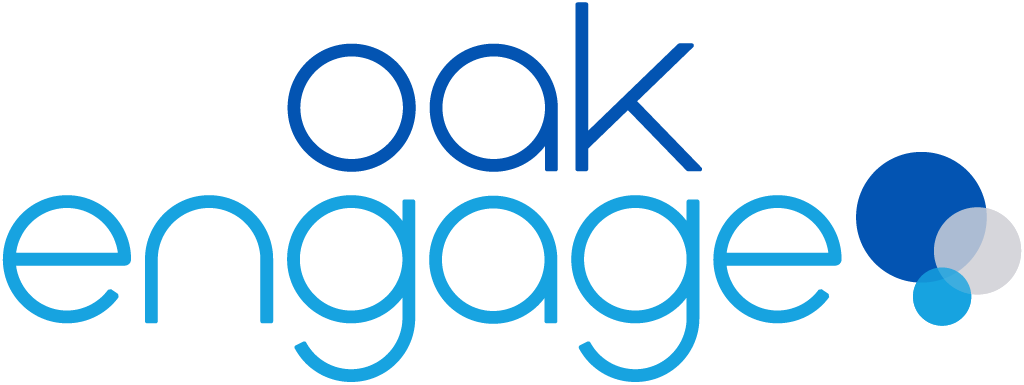Businesses have been using Net Promoter Score (NPS) to measure customer satisfaction for years. It can be hard to measure the feeling towards a business, so a scoring system can help make the exercise a bit more scientific.
But, aren’t happy employees the key to happy customers? This is why it is becoming more common for organisations to apply the same system to measure employee satisfaction with the business. This is called Employee Net Promoter Score or eNPS.
In this blog we will tell you about eNPS and show you exactly how to apply it to your business. As a result you can evaluate employee engagement and satisfaction in a more measurable and digestible way.
The blog includes:
- What is eNPS?
- Why Should I Be Using eNPS?
- How Can I Calculate Employee Net Promoter Score?
- What is a Good Employee Net Promoter Score?
- What Factors Can I Change to Improve My eNPS?
What Is eNPS?
Employee Net Promoter Score or eNPS, is basically a scoring system used to measure how employees feel about their employer. The University of Oxford found that happy employees are 13% more productive, so a good eNPS score is worth its weight in gold.
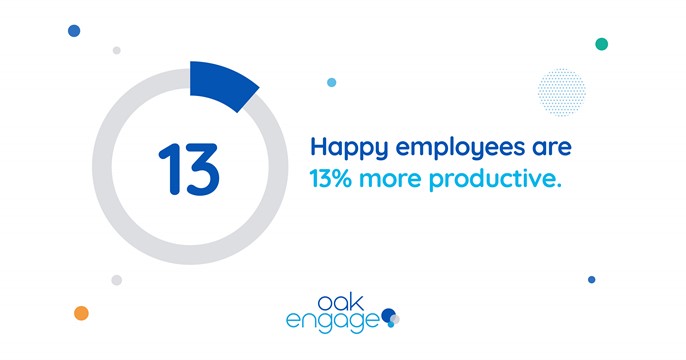
Scores are taken from 0-10 in survey-type questions such as ‘how likely are you to recommend working here?’
Obviously scoring a 10 is the ultimate goal and a 0 is.. pretty much a disaster.
An employee’s score will determine which category they’re in. These are detractors, passives or promoters. More on them later…
As mentioned before, eNPS is based on NPS and in a similar vein is used to establish the level of loyalty and enthusiasm about a company.
After finding out individual scores you can calculate an overall eNPS score of your entire workforce or specific teams. But again, more on that later….
Why Should I be Using eNPS?
Employee engagement can be a tricky thing to measure but eNPS allows you to do just that. Having a score and a formula to measure against gives you a much clearer picture of how your employees feel about the company and their role.
There is so much value in having this data. Your eNPS can be how you measure the success of your employee engagement objectives. It just makes everything easier to keep track of and can make decisions to improve the employee experience, based on facts.
How Can I calculate Employee Net Promoter Score?
There is a process to calculate your eNPS, but it is pretty straightforward.
Once you have your survey questions, you take the scores from your answers on a scale of 0-10. From there you can group your responses. The groups are; Detractors (0-6), Passives (7-8), Promoters (9-10). To get your eNPS you need to establish how many people are in each group.
Subtract your percentage of promoters by the percentage of detractors (eNPS= % of promoters- % of detractors).
So if you have a percentage of 70% promoters and 20% detractors (which would mean 10% passives), you would have an eNPS of 50. Easy as that!
Your score can be any number between -100 and 100.
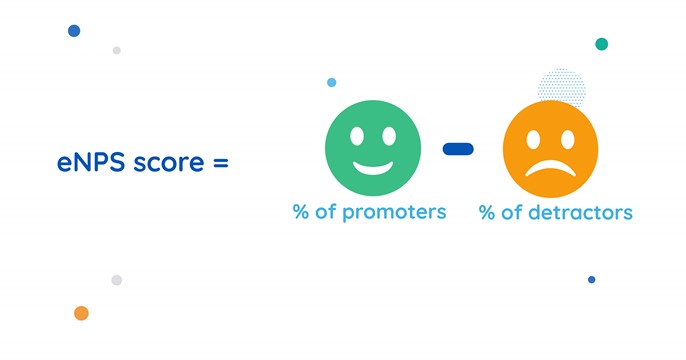
Promoter
Promoters are your happiest and most satisfied employees. They are scoring 9 and 10 and generally, you will worry about them less than the other two categories. They’re already motivated and feel very positively about your company.
However, just because they’re happy now doesn’t mean you can take them for granted. A promoter can become a detractor in a short space of time if you don’t continue to keep them engaged.
You can also use the promoters as a benchmark. What are you doing right with them that you aren’t doing with your detractors and passives?
Detractor
Your lowest scorers, detractors, tally up anything between 0 and 6. They are generally dissatisfied with the company. Here you need to be mindful of the internal and external consequences of an unhappy workforce.
Detractors are not exactly going to have glowing praise for the organisation, so having a low eNPS score can impact the businesses reputation to potential recruits and customers.
Passives
Passives feel a bit…meh about your company. They don’t hate working for your business but probably don’t love it either.
They generally score 7 or 8 on your questions. Passives may not have the same enthusiasm for the work they do and who they work for as promoters but are closer to that than their detractor counterparts.
Passives are a group you can engage further. You need to consider aspects of their work and feelings towards the company that are rather indifferent. Work to make improvements to the employee experience in the same way you will for detractors.
What Is a Good Employee Net Promoter Score?
A good eNPS score will look different for different industries, so it is hard to put an exact figure on it, but there is a general rule of thumb.
Your eNPS can be anything from -100 to 100, so it’s safe to say a number close to the former is a great cause for concern and the latter is the dream for any business.
Qualtrics states that in general a good eNPS is between 10 and 30 and anything above would be considered ‘excellent’.
But, as discussed this cannot be taken as an exact science.
In order to really measure your eNPS, it should be compared to competitors. Grading against businesses in the same industry or of a similar size will give you a better idea of how well you’re doing.
What Factors Can I Change to Improve My eNPS?
The whole point of a promoter score is being able to measure where you are and take steps to build upon it. Unless you're at +100 then there is always room for improvement!
If you have already taken your eNPS and aren’t happy with it, or if you just know it won’t be a pleasant site, then fear not. There are steps you can take to improve your eNPS.
Here are some practical tips to help:
Conducting Employee Feedback Surveys
Conducting feedback surveys to then improve your other survey scores might seem odd..but hear us out.
Employee Net Promoter Scores are usually taken in formal timeframes, maybe once a year or quarter. By continuously taking feedback from employees you put yourself in the best possible position to create a good employee experience and get a positive score.
Oak’s Pulse Surveys and polls are a brilliant way to do this, as they are linked to real time dashboards so the data is there for you to make changes right away! The phrase ‘nipping it in the bud early’ comes to mind.
Any issues can be rectified early and you can make improvements all the time to make sure that when those eNPS surveys are conducted, you’re scoring as highly as you possibly can.
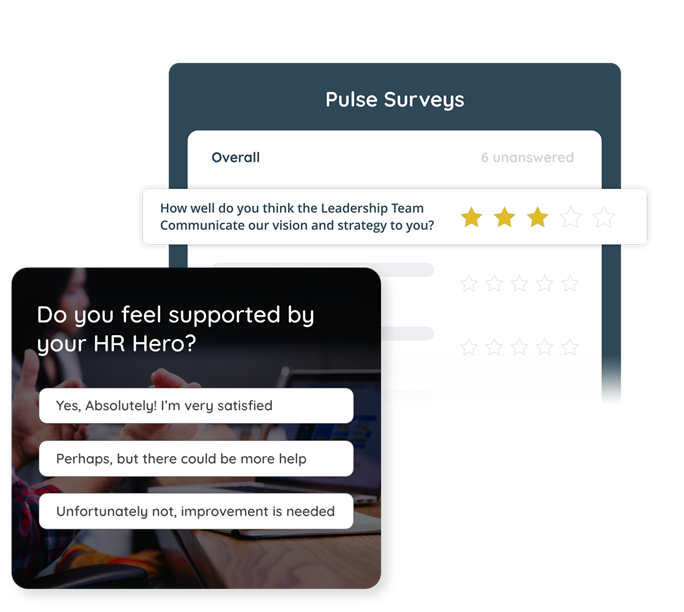
Investigate Why Someone Could Be a Promoter, Detractor or Passive
By evaluating feedback regularly you can delve a bit deeper into why someone may be a promoter, detractor or passive. With segmented data you can look at the department, level or even characteristics of each to see if there is any correlation between groups and their eNPS scoring.
For example, you can determine whether deskless workers tend to be detractors. On the back of this sort of insight, you can tailor approaches to improve your eNPS. It may be a case of reaching your internal audiences using different means to engage them and improve the employee experience.
Using that same example, adopting a mobile intranet app and using push notifications would be a way to tailor an approach to engage with deskless workers.
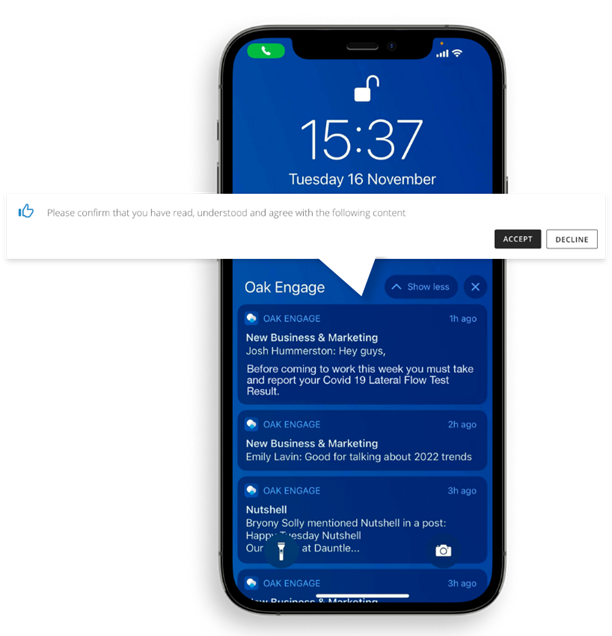
Recommended Reading 📖: Internal Audiences: How to Create Them for IC
Recognise Employee’s Achievements
A simple, effective way of improving your eNPS is making your employees feel more appreciated by celebrating and recognising their achievements.
Often, disengagement will stem from not people feeling valued by the organisation. Remember, advocacy is a two-way thing! You have to give a little to get a little.
85% of HR leaders say that recognition programmes positively impact culture, so showing appreciation regularly is bound to reflect positively on your eNPS and create a more positive environment.
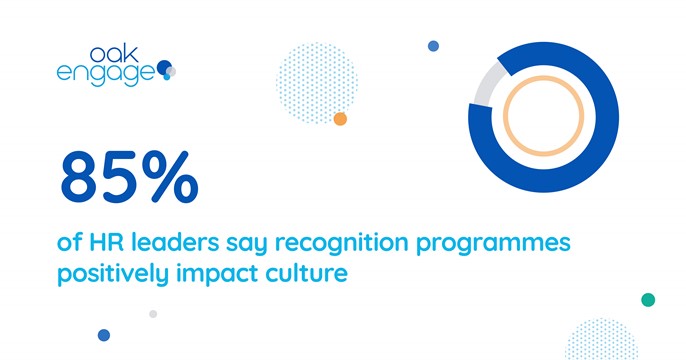
It doesn’t have to be all-singing, all dancing. A simple thank you message or a post to your company's social feed is enough to create a culture of appreciation and valuing workers.
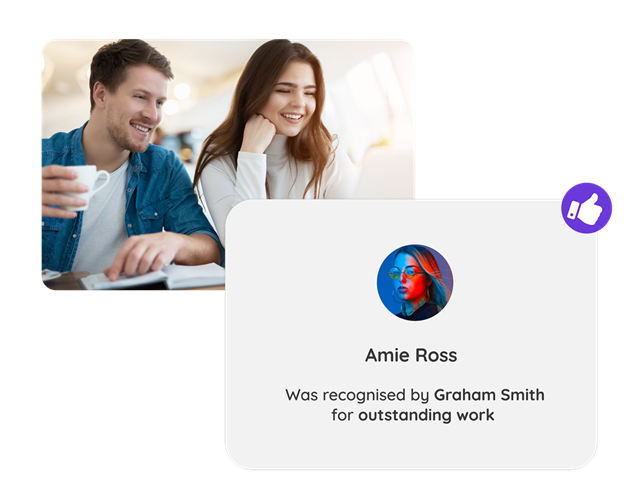
So now you know not only what an Employee Net Promoter Score is, but also how to improve yours to a level that will create a better culture and attract potential recruits.
Download your free PDF for your condensed guide eNPS.
How important is the employer Net Promoter Score to your employee engagement strategy? We would love to hear your thoughts on Twitter and Linkedin.
